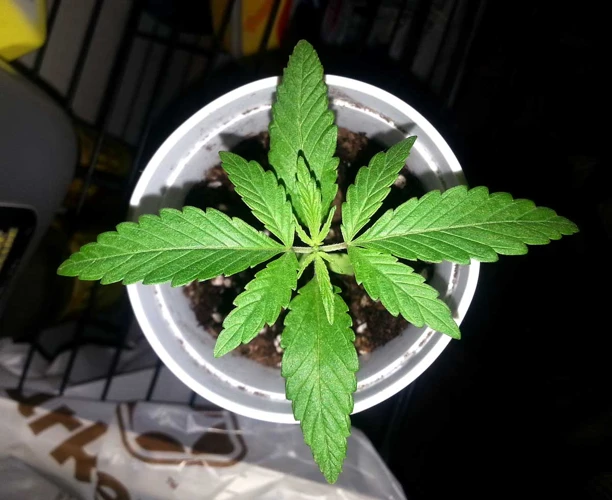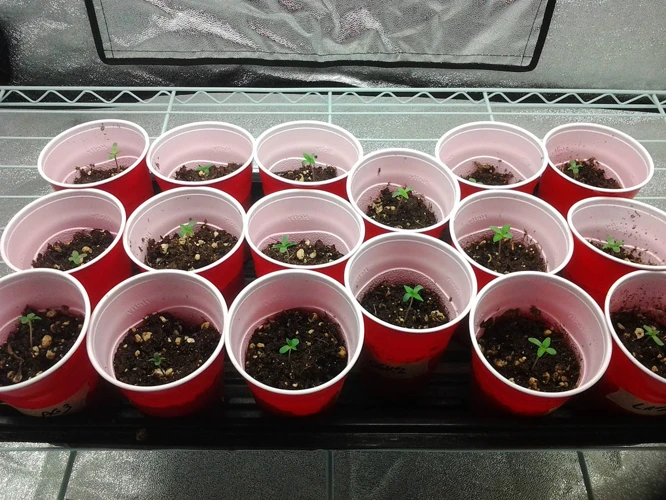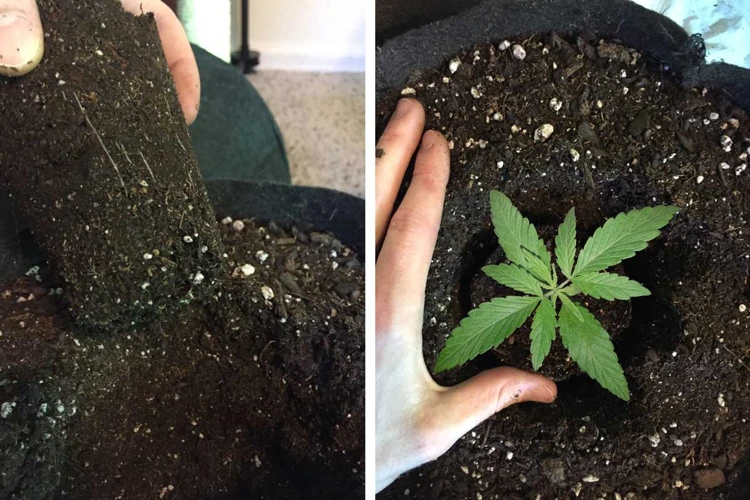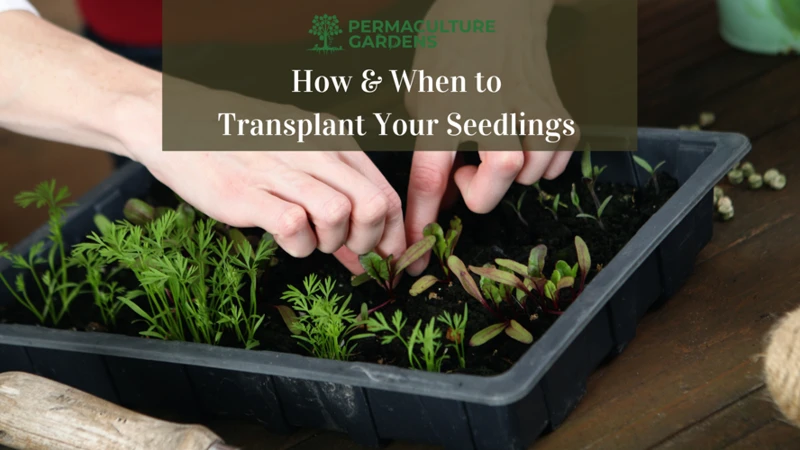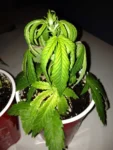
Transplanting Cannabis Seedlings: Timing is Everything
As a new grower, you may find yourself wondering when the right time to transplant cannabis seedlings is. It’s a perplexing question that can leave many scratching their heads. Transplanting can be a delicate process, but it’s one that can yield great rewards for your plants if done correctly. In this article, we’ll take a closer look at when you should transplant cannabis seedlings, the benefits of doing so, and how to transplant them step-by-step. We’ll also cover common mistakes to avoid and how to care for your transplanted seedlings. So sit back, relax, and let’s dive into the world of transplanting cannabis seedlings.
Why Transplant Cannabis Seedlings?
Contents
As a cannabis grower, you may be wondering why transplanting seedlings is necessary. Well, there are several benefits to transplanting that can improve the growth and overall health of your plants. By moving seedlings to larger containers, you can provide them with more space and nutrients to develop a larger root system, which will support the growth of a stronger, healthier plant. Additionally, transplanting can help prevent overcrowding and reduce the risk of root-bound plants. Let’s explore the importance of transplanting cannabis seedlings in more detail.
Benefits of Transplanting
Transplanting cannabis seedlings from their initial containers to larger ones offers several benefits that can improve the health and overall yield of the plants. Here are some of the primary benefits of transplanting:
- Promotes Root Growth: When a seedling has outgrown its initial container, its roots become root-bound, meaning they don’t have enough space to extend and grow. Transplanting them into a larger container allows the roots to spread out, encouraging healthy root growth and improving the plant’s ability to absorb nutrients and water.
- Prevents Overcrowding: Seedlings that are left in their initial containers for too long can easily become overcrowded. Overcrowding can lead to stunted growth and an increased risk of disease and pests. Transplanting the seedlings into larger containers helps to prevent overcrowding and provides more space for the plants to grow.
- Increases Nutrient Availability: Larger containers typically have more soil, which means they can hold more nutrients. This increased nutrient availability allows the plants to grow stronger and healthier.
- Improves Water Retention: Larger containers can hold more water, which means that the soil will stay moist for longer periods. This can be particularly beneficial during hot and dry weather conditions.
- Encourages Stronger Plants: When transplanting cannabis seedlings, the process of removing them from their initial container and placing them into a larger one can cause a type of stress that is believed to encourage the development of stronger and hardier plants.
Transplanting cannabis seedlings is a simple but effective way to promote healthy root growth and encourage stronger and larger plants. It can also help to prevent overcrowding, increase nutrient availability, and improve water retention.
When to Transplant Cannabis Seedlings
Determining the precise timing for transplanting your cannabis seedlings can be a bit tricky, especially if you’re a beginner grower. You want to ensure that your young plants have had enough time to develop strong roots, but you also don’t want to wait too long and risk causing damage during the transfer process. Timing is crucial when it comes to transplanting cannabis seedlings, and several factors must be considered before determining when the optimal timing is. In this section, we’ll explore the various factors to consider and the signs to look for to know that your seedlings are ready for transplanting.
Factors to Consider
Transplanting is an essential step in the growth of cannabis seedlings, but the timing is crucial. There are many factors to consider before transplanting to ensure the seedlings are ready for the transfer. Here are the key factors to consider:
| Factor | Importance |
|---|---|
| Age of Seedlings | Determining the age of the seedlings is critical to know if they are ready to be transferred to a bigger pot. Transferring too soon can cause root disruption and stunt growth. In contrast, transplanting too late can cause the roots to become root-bound, leading to nutrient deficiencies and stunted growth. |
| Size of Seedlings | The size of the seedlings should be considered before transplanting. Seedlings of at least 2-3 inches in height are usually ready for transplant as their roots have fully developed. larger seedlings may need more time before transplanting. |
| Growth Stage | The growth stage of the seedling should be taken into account. If the seedling is still in the early stages, such as the cotyledon stage, it may not be mature enough for transplanting. However, if the seedlings have started forming true leaves, they are usually ready to be moved. |
| Climatic Conditions | The climate and environmental conditions have a significant impact on when to transplant seedlings. Transplanting during harsh weather conditions such as strong wind, extreme heat or rain can cause the newly transplanted seedlings to go into shock, damaging their delicate roots and stunting their growth. |
| Type of Soil and Pot | The type of soil and pot used should be considered as well. Seedlings need soil that has good drainage to prevent root rot. Pots that are too small will become root-bound, leading to weaker plants. |
| Nutrient Requirements | It is essential to consider the nutrient requirements of the plant before transplanting. Seedlings in a new pot may need more nutrients than they did in the seedling tray to support their rapid growth. |
By taking these factors into consideration, you can determine the appropriate time to transplant your cannabis seedlings to ensure optimal growth and health.
Signs that Seedlings are Ready for Transplanting
When deciding if your cannabis seedlings are ready for transplanting, it’s important to look for certain signs that indicate they are strong enough to handle the move. Here are some indications to look out for:
| Signs | Meaning |
| Crowding | If your seedlings are starting to touch each other or the sides of the container, it means they do not have enough space to grow and need to be transplanted. |
| Root Development | If you see roots coming out of the bottom of the container, it means your seedlings are starting to outgrow their environment and require more space for growth. |
| Sturdy Stems | Seedlings that have strong and firm stems are better able to handle the stress of transplantation, and are generally better equipped for outdoor growing. |
| Healthy Leaves | If your seedlings have lush and vibrant green leaves, it means they are healthy and have the vigor to be transplanted into a larger container. |
| Multiple Sets of Leaves | Seedlings with multiple sets of leaves are ready for transplanting as it indicates that they have outgrown their initial phase of growth. |
It is important to note that while these signs indicate that your seedlings are ready for transplanting, it’s best to wait until they are at least a few inches tall and have established a solid root system before transplanting them. Rushing the transplanting process can cause undue stress to the seedlings and stunt their growth potential.
How to Transplant Cannabis Seedlings
Now that you have determined that your seedlings are ready for transplanting, the next step is to learn how to do it properly. It may seem daunting at first, but with the right materials and technique, you can successfully transplant your cannabis seedlings to promote healthy growth and development. In this section, we will provide a step-by-step guide on how to transplant your seedlings, as well as some common mistakes to avoid and tips for caring for the newly transplanted plants. By following these guidelines, you can ensure the best possible start for your cannabis plants.
Materials Needed
To transplant your cannabis seedlings, you will need several materials to make the process easy and efficient. These include:
- Transplant containers: You will need larger containers compared to the initial ones you used for seeding. Ideally, pots that are around 4-6 inches in diameter and 4-6 inches deep are perfect for most strains.
- Soil mixture: You will need soil that is rich in nutrients and properly balanced with pH levels. Choose a well-draining soil that can hold nutrients efficiently without getting waterlogged.
- Water: Ensure you have clean water to keep your cannabis seedlings hydrated before and after transplanting.
- Fertilizer: Depending on your soil mixture, you may need to add nutrients to enhance growth and development.
- Gloves: To protect your hands from getting dirty or contaminated with pests or germs, wear gloves during the transplanting process.
- Trowel or spoon: You will need a trowel or spoon to dig out the seedlings and transport them to the new containers.
Remember to sterilize all your equipment before use to reduce the risk of contamination or disease spread. Additionally, have a clean workspace and good lighting to make the process easier and more efficient. With all the necessary materials, you can successfully transplant your cannabis seedlings and ensure they grow healthy and strong.
Step-by-Step Guide
Transplanting cannabis seedlings can be a delicate process, but with the right materials and techniques, it can be done successfully. Here is a step-by-step guide to help you transplant your cannabis seedlings:
| Step 1: | Prepare the new container by filling it with pre-moistened soil. Make sure the new container has good drainage holes and is the appropriate size for your seedling. |
| Step 2: | Water the soil in the existing container thoroughly before transplanting. This will help keep the soil and roots intact during the transfer. |
| Step 3: | Gently remove the seedling from the existing container. Be careful not to damage the roots, as this can affect the health of the plant. |
| Step 4: | If the plant has become rootbound, loosen the roots gently with your fingers or a fork. This will help the roots spread out more effectively in the new container. |
| Step 5: | Place the seedling in the new container and fill it with soil until it is level with the top of the existing soil. Gently pat down the soil around the seedling to secure it in place. |
| Step 6: | Water the soil around the seedling until it is thoroughly moistened. This will help the roots establish themselves in the new container. |
Remember to transplant your seedling during the cooler part of the day to avoid stressing the plant. After transplanting, monitor your seedling closely and make sure it gets the appropriate amount of water and light. Avoid fertilizing for the first week after transplanting, as this can also stress the plant. By following these simple steps, you can successfully transplant your cannabis seedlings and give them the best chance at a healthy future.
Common Transplanting Mistakes to Avoid
One of the biggest mistakes that beginners make when transplanting seedlings is using the wrong size of pot. Choosing a pot that is too small may lead to stunted growth, while opting for one that is too large can cause root rot. It is important to choose a pot that is appropriate for the size of the seedling.
Another mistake to avoid is transplanting during the wrong time of day. This can cause stress on the plant and make it harder for the roots to adjust to the new soil. It is best to transplant during the cooler parts of the day, such as early morning or late afternoon.
Overhandling the seedlings can also be detrimental to their growth. While it is important to carefully remove the seedlings from their initial pot, excessive handling and root disturbance can cause damage to the plant. Avoid touching the stem and try to keep as much soil intact as possible during the transplanting process.
Another common mistake is failing to water the seedlings adequately after transplanting. Water is essential for the plant’s growth and development, and failing to provide enough of it can stunt growth and harm the plant. It is important to water the seedlings immediately after transplanting and to continue watering regularly as they adjust to their new soil.
Lastly, exposing the seedlings to too much light or heat immediately after transplanting can cause shock and inhibit growth. It is important to gradually increase the amount of time and intensity of light exposure over the course of a few days to allow the seedlings to adjust.
By avoiding these common transplanting mistakes, growers can ensure the success of their cannabis seedlings and promote healthy growth.
Caring for Transplanted Seedlings
After transplanting cannabis seedlings, it is crucial to provide proper care and attention to ensure their healthy growth. While the process of transplantation can be stressful for seedlings, providing the right care can help them thrive in their new environment. This section will cover key aspects of caring for transplanted seedlings, including watering and feeding, as well as light exposure. By following these guidelines, you can ensure your transplanted seedlings reach their full potential.
Watering and Feeding
After transplanting cannabis seedlings, it’s crucial to provide proper care and attention to the plant’s watering and feeding needs. Here’s what you need to know:
| Watering | Feeding |
|---|---|
|
Amount: Water the seedlings thoroughly to encourage root growth. However, be careful not to overwater them, as damp soil can lead to root rot. Frequency: Water the plants when the top inch of soil feels dry to the touch. Depending on the humidity levels of your growing area, you may need to water as frequently as once a day. Method: Pour water slowly onto the soil, making sure it is absorbed evenly throughout. Avoid watering the leaves, as this can lead to fungal growth. |
Type: Choose a high-quality fertilizer specifically formulated for cannabis seedlings. Look for options that are rich in nitrogen, as this will promote healthy foliage growth. Amount: Follow the instructions on the fertilizer package carefully to ensure you are providing the right amount. Overfeeding can cause nutrient burn and other issues, so be cautious. Frequency: In general, seedlings need to be fed less frequently than mature plants. Aim to feed them every two to three weeks. |
Remember, the needs of your seedlings may vary based on a variety of factors, such as the specific strain you are growing, the size of your container, and your growing environment. Keep a close eye on your plants and adjust your watering and feeding habits as needed to ensure they are healthy and thriving.
Light Exposure
It’s important to pay attention to light exposure after transplanting your cannabis seedlings. They may experience shock due to the move and need to adjust to their new environment. Light intensity and duration should be gradually increased to prevent further stress on the plants.
It’s recommended to keep the seedlings under low light for a few days before gradually increasing the intensity over time. The table below provides a guide for adjusting light exposure post-transplant.
| Days after Transplanting | Light Exposure |
|---|---|
| 1-3 days | Low light |
| 4-7 days | Medium light |
| 8-14 days | High light |
It’s important to ensure that the plants are receiving the right amount of light for their growth stage. Seedlings require less intense light compared to mature plants. A common mistake is to expose seedlings to intense light, which can lead to burning and stunted growth.
It’s crucial to gradually increase light exposure after transplanting cannabis seedlings while ensuring that the light intensity is appropriate for their growth stage. This will help prevent further stress on the plants, ensuring optimal growth and development.
Conclusion
In conclusion, transplanting cannabis seedlings may seem like a daunting task, but with the right knowledge and techniques, it can be a simple and rewarding experience. It is important to remember to transplant at the right time to avoid any setbacks in growth or potential damage to the roots. By considering factors such as plant size, root development, and growing conditions, growers can determine the best time to transplant their seedlings.
When transplanting, be sure to handle the delicate roots with care and provide a suitable growing medium for optimal growth. Avoid common mistakes such as overwatering, overcrowding, and damaging the roots. With proper care, transplanted seedlings can thrive and produce healthy, robust cannabis plants.
Caring for transplanted seedlings involves maintaining a consistent watering and feeding schedule, providing adequate light exposure, and monitoring for any signs of stress or pests. With time and attention, these young plants can grow into strong and productive cannabis plants.
Overall, transplanting seedlings is an important step in the growth process of cannabis plants. By following the proper techniques, growers can ensure healthy and successful plant growth, leading to abundant yields and high-quality cannabis.
Frequently Asked Questions
What is the purpose of transplanting seedlings?
The purpose of transplanting seedlings is to provide them with more space for growth, better access to nutrients and water, and a stable environment for development.
When is the best time to transplant cannabis seedlings?
The best time to transplant cannabis seedlings is when they have developed a healthy root system and their leaves have grown past the first set of true leaves.
What factors should I consider before transplanting my seedlings?
Factors to consider include the size and health of your seedlings, the size of the container you will be transplanting them into, and the environmental conditions of your growing space.
What are the signs that my seedlings are ready for transplanting?
Signs that seedlings are ready for transplanting include the development of a healthy root system, the presence of multiple sets of true leaves, and an overall sturdy and healthy appearance.
What materials do I need to transplant seedlings?
You will need a new container for your seedlings, a high-quality growing medium, and a tool for gently removing the seedlings from their current container.
Are there any common mistakes to avoid when transplanting seedlings?
Yes, common mistakes to avoid include transplanting seedlings too early, damaging the root system during transplantation, not providing enough water, and exposing the seedlings to too much light or heat.
How often should I water my transplanted seedlings?
You should water your transplanted seedlings as soon as the top inch of soil feels dry to the touch. Avoid overwatering, as this can lead to root rot and other issues.
What type of nutrients should I provide for transplanted seedlings?
You should provide a balanced nutrient solution that contains the essential macronutrients (nitrogen, phosphorus, and potassium) as well as micronutrients like calcium, magnesium, and iron.
How can I ensure that my transplanted seedlings receive enough light?
You can ensure that your transplanted seedlings receive enough light by placing them under grow lights that provide a minimum of 18 hours of light per day, or by placing them near a south-facing window where they can receive plenty of natural sunlight.
What is the optimal temperature range for transplanted seedlings?
The optimal temperature range for transplanted seedlings is between 70-80°F (21-26°C) during the day and 60-70°F (15-21°C) at night.

